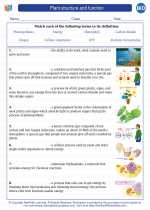Chemotaxis: An Overview
Chemotaxis is the process by which cells, particularly microorganisms and immune system cells, move in response to chemical signals in their environment. This phenomenon plays a crucial role in various biological processes, including the immune response, embryonic development, and bacterial movement.
Mechanism of Chemotaxis
Chemotaxis involves a series of steps:
- Chemical Detection: Cells detect chemical gradients in their surroundings through specialized receptors.
- Signal Transduction: Upon detection, the chemical signals are transduced into intracellular signals, leading to changes in the cell's behavior.
- Cellular Response: The cell undergoes directed movement towards or away from the source of the chemical gradient.
Examples of Chemotaxis
Examples of chemotaxis include:
- Bacterial Chemotaxis: Bacteria such as Escherichia coli exhibit positive chemotaxis towards nutrients and negative chemotaxis away from harmful substances.
- Immune Cell Chemotaxis: Immune cells like neutrophils and macrophages are attracted to sites of infection by chemical signals released by damaged tissues and pathogens.
Study Guide
To study chemotaxis effectively, consider the following key points:
- Understand the molecular mechanisms of chemotaxis, including the role of chemoreceptors and signaling pathways.
- Explore the physiological significance of chemotaxis in different biological contexts, such as wound healing and microbial ecology.
- Compare and contrast positive and negative chemotaxis and their respective roles in cellular behavior.
- Examine current research in the field of chemotaxis, including the development of novel therapies targeting chemotactic responses.
By mastering the concepts and examples of chemotaxis, you can gain a deeper understanding of this fundamental biological process and its implications in various fields of biology.
.◂Biology Worksheets and Study Guides High School. Plant structure and function
Worksheet/Answer key Plant structure and function
Plant structure and function  Worksheet/Answer key
Worksheet/Answer key Plant structure and function
Plant structure and function  Worksheet/Answer key
Worksheet/Answer key Plant structure and function
Plant structure and function  Worksheet/Answer key
Worksheet/Answer key Plant structure and function
Plant structure and function  Vocabulary/Answer key
Vocabulary/Answer key Plant structure and function
Plant structure and function  Vocabulary/Answer key
Vocabulary/Answer key Plant structure and function
Plant structure and function 

 Worksheet/Answer key
Worksheet/Answer key
 Worksheet/Answer key
Worksheet/Answer key
 Worksheet/Answer key
Worksheet/Answer key
 Vocabulary/Answer key
Vocabulary/Answer key
 Vocabulary/Answer key
Vocabulary/Answer key

The resources above cover the following skills:
Concepts of Life Science (SC1, SC2, SC3)
The student demonstrates an understanding of the structure, function, behavior, development, life cycles, and diversity of living organisms by describing the structure-function relationship